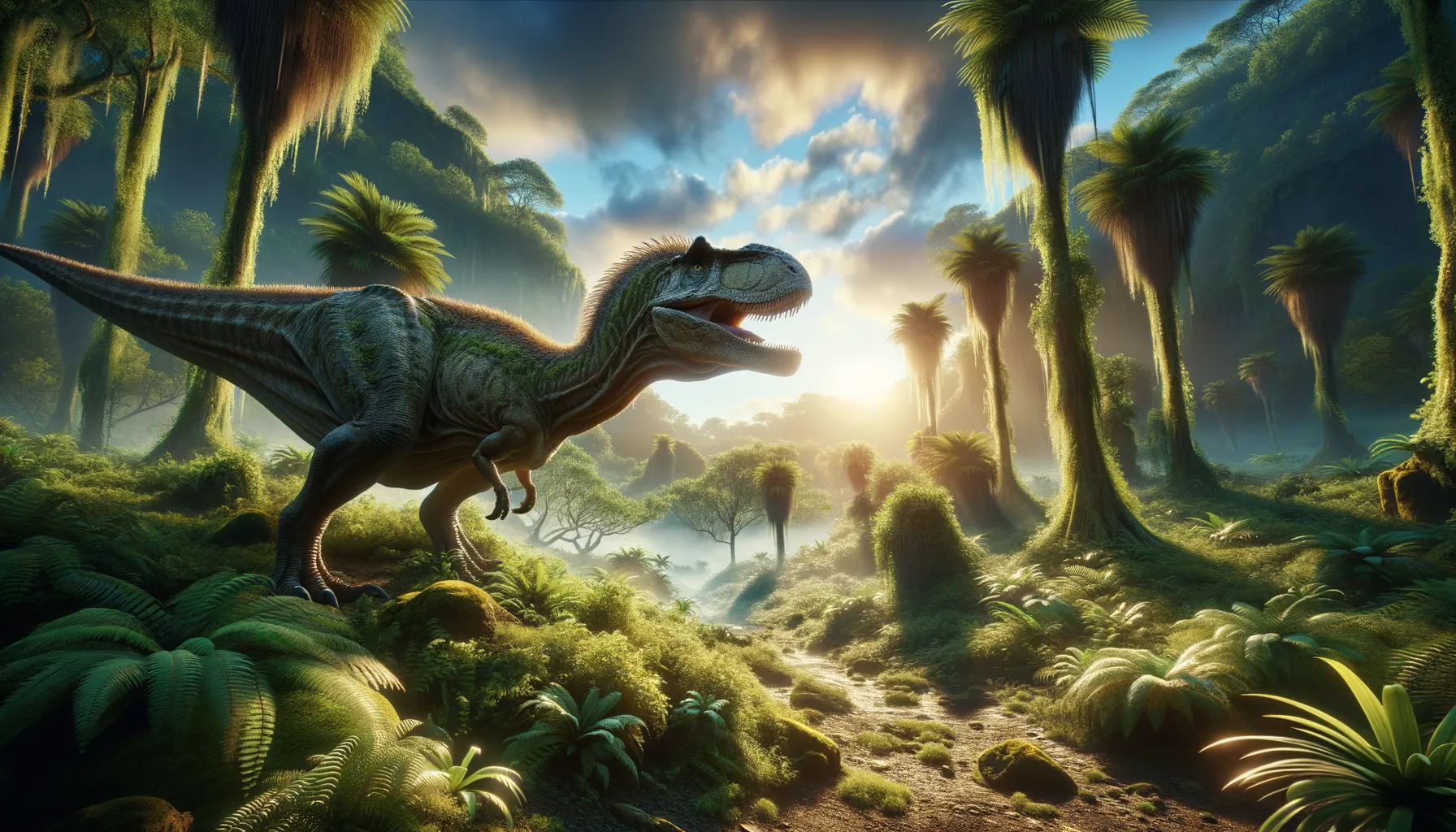
Weewarrasaurus
A gentle grazer of ancient Australia.
Period
Cretaceous
Length
Around 2 meters long.
Height
Approximately 1 meter tall.
Weight
Estimated at around 100 kg.
Weewarrasaurus, a small herbivorous dinosaur, roamed the earth during the Cretaceous period. Its fossils were first unearthed in 2018 in Australia, shedding light on the diverse dinosaurs that once thrived there. As a member of the Ornithopoda group, it was bipedal and likely spent its days grazing on plants. This discovery has helped paleontologists better understand the prehistoric ecosystems of that region.
Diet
Weewarrasaurus was herbivorous, feeding primarily on the abundant vegetation around its habitat. Its diet likely consisted of ferns, cycads, and possibly flowering plants as well.
Hunting
Weewarrasaurus did not hunt as it was a herbivore. It spent most of its time foraging for plants for sustenance.
Environmental challenges
Living during the Cretaceous meant facing diverse predators and fluctuating climates. The competition for food resources might have been intense with other herbivorous dinosaurs around. Predators would pose a significant threat, requiring awareness of its surroundings to avoid danger.
Speed
Relatively slow mover.
Lifespan
Likely several decades.
First discovery
Discovered in 2018 in New South Wales, Australia.
Fun Facts
- Weewarrasaurus was a small, herbivorous dinosaur from the Cretaceous period, meaning it lived around 100 million years ago.
- This dinosaur was discovered in Australia, making it part of a significant group of dinosaurs found in the region known as Gondwana.
- The name Weewarrasaurus comes from the Wee Warra area in New South Wales, where its fossils were found.
- It was relatively small, as far as dinosaurs go, with an estimated length of about 2 meters or around 6.5 feet.
- Weewarrasaurus is believed to have been a fast and agile runner, which helped it escape predators of its time.
- The fossil of Weewarrasaurus was initially found by a gem miner, highlighting how discoveries can happen in the most unexpected ways.
- Weewarrasaurus belongs to the dinosaur group known as ornithopods, which includes other small to medium-sized plant-eaters.
Growth and Development
Weewarrasaurus, like other dinosaurs, would hatch from eggs and gradually grow to full size. Juveniles might have stayed in groups for protection against predators. Growth rates varied depending on resource availability and environmental conditions.
Habitat
Weewarrasaurus lived in what is now Australia, a region likely comprising forests and plains with a rich variety of plant life. Proximity to water sources would have been crucial for its survival. The environment provided ample food resources for a thriving herbivore population.
Interaction with other species
As a gentle herbivore, Weewarrasaurus likely coexisted peacefully with other herbivorous species. However, it had to constantly guard against carnivorous predators. It may have formed herds, enhancing protection against threats.
Natural lifespan
Lived naturally for several decades if evading predators.
Reproduction
Reproduction involved laying eggs in nests constructed in safe, hidden areas. These nests were likely cared for by the adults to ensure the young's survival. Offspring would grow under close watch to avoid predators.
Social behaviour
Weewarrasaurus may have exhibited social behavior by forming herds, especially for better protection. Such group dynamics would have helped with predator awareness. Communication within these herds was likely through vocalizations and body language.
Fossil locations
The first fossils of Weewarrasaurus were discovered in New South Wales, Australia. This location provides crucial insights into the diverse fauna of the region during the Cretaceous period. Fossils from this area help reconstruct ancient ecosystems and the evolutionary history of Ornithopoda.
